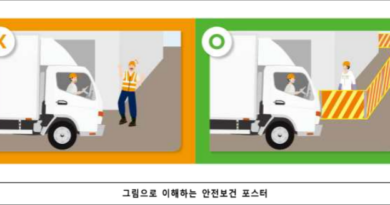You can easily check food information, Braille, voice, and sign language video.

The Ministry of Food and Drug Safety (Minister Oh Yoo-kyung) has established a “braille labeling of food, etc. It was announced that the “Guidelines” were revised on March 8.
This revision provides food business operators with detailed labeling standards according to the material and form of various containers and packaging, helping food business operators display Braille and codes more accurately, while also making it easier for visually and hearing impaired people to check food information. The purpose is to allow people to choose food.
Considering the diversity of materials and shapes of food containers and packaging, the types of containers and packaging that display Braille and codes were divided into 17 types, including plastic, cans, film, and paper, and business operators were advised to determine the marking location for each type. , so that visually and hearing impaired people can easily find Braille and codes.
Braille is located at the top of the main display screen, and if it is difficult to display embossed or tactile protrusions on the border of the code, the QR code is displayed near a place where the visually impaired can tactually read, such as Braille, caps, perforations, and joints, or can be read tactilely. If there is no location, it is displayed at the top of the main display screen.
It also stipulates detailed display methods for Braille and codes. In the case of Braille, it was subdivided into methods of directly displaying Braille at the molding stage of containers and packaging (pressing, blowing, vacuum, injection) and methods of displaying Braille on labels or stickers (embossing). Based on actual cases in the industry, Braille We have also prepared things to keep in mind when displaying . In the case of codes for voice/sign language video conversion, new production methods, display methods, and QR standards were established.
Kim Young-il, president of the Korea Federation of the Blind, said, “We expect that the revision of this guideline will allow visually and hearing impaired people to better check food label information,” and added, “We hope that more companies will participate in Braille and QR code labeling in the future.” He said.
For your reference, these guidelines were prepared after sufficient discussion by a public-private consultative body consisting of disabled people’s groups, consumer groups, academia, and industry. In particular, the recommended display positions actively reflected the results of a preference survey for disabled people and the opinions of disabled people’s groups, so that visually impaired people can use them. It was chosen to be in a location that is easy to find.
The Ministry of Food and Drug Safety plans to continue to communicate with stakeholders, including disabled people’s groups and industry, to actively reflect on-site opinions in labeling policies to ensure that visually and hearing impaired people have the right to know food information.
Detailed information about the revised guidelines can be found on the Ministry of Food and Drug Safety’s main website.
Editor Jun Beom








